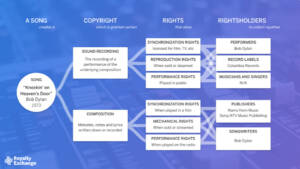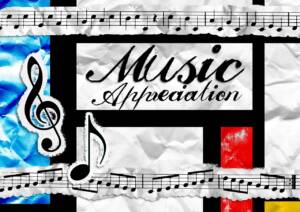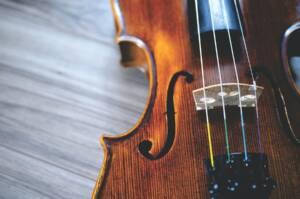The Benefits of Collaborating with Other Artists

Enhanced Creativity
Exposure to new ideas and perspectives
Collaborating with other artists provides a valuable opportunity to be exposed to new ideas and perspectives. When working alone, it is easy to become trapped in our own creative bubble, limited by our own experiences and knowledge. However, by collaborating with other artists, we open ourselves up to a world of fresh perspectives and innovative ideas. Through discussions, brainstorming sessions, and the exchange of feedback, we can gain valuable insights and inspiration that can greatly enhance our own artistic practice. Additionally, collaborating with artists from different backgrounds and disciplines can introduce us to new techniques, mediums, and approaches that we may not have considered before. This exposure to new ideas and perspectives not only broadens our artistic horizons but also challenges us to think outside the box and push the boundaries of our creativity.
Combining different artistic styles and techniques
Combining different artistic styles and techniques can lead to a truly unique and innovative artistic experience. When artists from different backgrounds come together, they bring with them a diverse range of skills, perspectives, and approaches to their craft. This fusion of ideas and techniques can result in the creation of artwork that is unlike anything that either artist could have produced on their own. By combining different artistic styles and techniques, artists can push the boundaries of their own creativity and challenge traditional notions of what art can be. This collaboration can also provide an opportunity for artists to learn from one another, exchange knowledge and skills, and grow as artists. Overall, combining different artistic styles and techniques can open up new possibilities and create exciting and dynamic artwork.
Inspiration from collaborating artists
Collaborating with other artists can be an incredibly inspiring experience. When working with fellow creatives, ideas and perspectives are shared, sparking new and innovative approaches to art. The exchange of knowledge and skills can push individuals to step out of their comfort zones and explore new techniques or styles. Additionally, witnessing the passion and dedication of other artists can serve as a motivation to strive for excellence in one’s own work. Collaborations also provide an opportunity to learn from each other’s creative processes, allowing for personal growth and development. Overall, the inspiration gained from collaborating artists can fuel creativity and lead to the creation of truly remarkable and unique artistic pieces.
Expanded Network
Access to new audiences and markets
Collaborating with other artists provides access to new audiences and markets, allowing artists to expand their reach and gain exposure to a wider range of potential fans and customers. By working together, artists can tap into each other’s existing fan bases and introduce their work to new communities. This cross-promotion not only helps artists increase their visibility but also opens up opportunities for collaboration with other artists, galleries, and organizations that may have previously been inaccessible. Additionally, collaborating with artists from different genres or mediums can attract diverse audiences who may not have been exposed to their work otherwise. Overall, the access to new audiences and markets that comes with collaborating with other artists can greatly enhance an artist’s career and help them establish a stronger presence in the art world.
Opportunities for cross-promotion
Opportunities for cross-promotion can be highly advantageous for artists looking to expand their reach and gain exposure. By collaborating with other artists, individuals can tap into each other’s existing fan bases and introduce their work to new audiences. This can lead to increased visibility, recognition, and potential new followers or customers. Cross-promotion also allows artists to leverage each other’s strengths and skills, creating a synergy that can result in unique and innovative creations. Additionally, collaborating with other artists can open doors to new opportunities, such as joint exhibitions, shared marketing campaigns, or even collaborative projects that can further enhance an artist’s portfolio and reputation. Overall, cross-promotion provides a platform for artists to connect, support, and mutually benefit from each other’s talents and networks.
Building connections with influential artists
Building connections with influential artists can be incredibly beneficial for aspiring artists. Collaborating with established artists can provide opportunities for exposure and recognition in the art community. By working alongside influential artists, aspiring artists can learn from their expertise and gain valuable insights into the industry. Additionally, building connections with influential artists can open doors to new collaborations, exhibitions, and networking opportunities. These connections can also lead to mentorship and guidance, as established artists can offer advice and support to help aspiring artists further develop their skills and career. Overall, building connections with influential artists can greatly enhance an artist’s professional growth and success.
Shared Resources
Pooling of materials and equipment
Pooling of materials and equipment is one of the key benefits of collaborating with other artists. When artists come together to work on a project, they can share their resources, such as art supplies, tools, and equipment. This not only helps in reducing individual costs but also allows access to a wider range of materials and equipment. For example, one artist may have access to a high-quality printer, while another may have a collection of unique paintbrushes. By pooling their resources, artists can create higher quality artwork and experiment with different techniques and mediums. Additionally, sharing materials and equipment fosters a sense of community and encourages artists to learn from one another, leading to a more enriching and collaborative creative process.
Sharing of studio or workspace
Sharing a studio or workspace with other artists can have numerous benefits. Firstly, it provides a sense of community and camaraderie, allowing artists to connect with like-minded individuals who share their passion for creativity. This can lead to valuable collaborations and the exchange of ideas, techniques, and inspiration. Additionally, sharing a studio can also help reduce costs, as artists can split expenses such as rent, utilities, and equipment. This can be particularly beneficial for emerging artists or those on a tight budget. Furthermore, working in a shared space can foster a supportive and motivating environment, where artists can receive feedback, encouragement, and constructive criticism from their peers. Overall, the sharing of a studio or workspace can enhance artistic growth, networking opportunities, and overall productivity.
Access to specialized tools or software
Collaborating with other artists provides access to specialized tools or software that can greatly enhance the creative process. In today’s digital age, there are numerous software programs and tools available that can help artists bring their visions to life. By collaborating with other artists, individuals can share their knowledge and expertise in using these tools, allowing everyone involved to benefit from a wider range of creative possibilities. Whether it’s a graphic design software, a 3D modeling program, or a music production tool, collaborating with other artists can open up new avenues for experimentation and innovation. Additionally, sharing access to these specialized tools can also help reduce costs, as artists can pool their resources and share the expenses associated with purchasing or licensing expensive software.
Learning and Skill Development
Exchange of knowledge and techniques
Collaborating with other artists provides a unique opportunity for the exchange of knowledge and techniques. When artists come together, they bring with them their own experiences, skills, and perspectives. This exchange allows for the sharing of different artistic approaches, methods, and ideas, which can greatly enrich the creative process. By learning from one another, artists can expand their artistic repertoire and develop new techniques that they may not have otherwise discovered. Additionally, collaborating with other artists can also lead to the discovery of innovative ways to solve artistic challenges, as different individuals bring their own unique problem-solving skills to the table. Overall, the exchange of knowledge and techniques through collaboration fosters growth, inspiration, and the development of a more diverse and dynamic artistic community.
Mentorship and guidance from experienced artists
Collaborating with other artists offers the valuable opportunity to receive mentorship and guidance from experienced individuals in the field. Working alongside seasoned artists allows for a transfer of knowledge and expertise, providing invaluable insights and advice. These mentors can offer guidance on various aspects of the artistic process, such as technique, composition, and artistic vision. Their experience and expertise can help aspiring artists refine their skills, overcome creative obstacles, and develop their own unique style. Additionally, mentorship from established artists can also open doors to new opportunities, such as exhibitions, collaborations, and networking connections. Overall, the mentorship and guidance provided by experienced artists through collaboration can greatly accelerate an artist’s growth and development in their artistic journey.
Opportunities for experimentation and growth
Collaborating with other artists provides unique opportunities for experimentation and growth. When artists come together, they bring their individual perspectives, skills, and techniques, creating a rich and diverse environment for exploration. Through collaboration, artists can push the boundaries of their own artistic practice and venture into new territories. They can learn from each other, exchange ideas, and challenge themselves to try new approaches. This process of experimentation allows artists to expand their creative horizons and discover new possibilities. Additionally, collaborating with other artists can also lead to personal and professional growth. It provides a chance to develop new skills, gain exposure to different artistic styles, and build a network of like-minded individuals. By working together, artists can inspire and motivate each other, fostering a supportive and collaborative community that nurtures growth and innovation.
Increased Productivity
Division of labor and tasks
Collaborating with other artists allows for a division of labor and tasks, which can greatly enhance the efficiency and quality of a project. Each artist can bring their unique skills and expertise to the table, allowing for a more specialized approach to different aspects of the creative process. For example, one artist may excel at sketching and concept development, while another may have a knack for color theory and composition. By dividing the workload, artists can focus on their strengths and contribute their best work, resulting in a more well-rounded and polished final product. Additionally, the division of tasks can help to alleviate the burden of work and prevent burnout, as artists can share responsibilities and support each other throughout the project. Overall, the division of labor and tasks in collaborative art projects promotes efficiency, specialization, and a higher level of creativity.
Collaborative problem-solving
Collaborative problem-solving is a powerful tool that can lead to innovative and effective solutions. When artists come together to solve a problem, they bring their unique perspectives, skills, and experiences to the table. This diversity of thought and expertise can help to uncover new ideas and approaches that may not have been considered otherwise. Additionally, collaborating with other artists allows for a collective pooling of resources, such as materials, equipment, and knowledge, which can enhance problem-solving capabilities. By working together, artists can tap into each other’s strengths, bounce ideas off one another, and provide constructive feedback, ultimately leading to more refined and successful outcomes. Collaborative problem-solving also fosters a sense of camaraderie and mutual support among artists, creating a positive and inspiring environment for creative exploration and growth.
Motivation and accountability from team members
Collaborating with other artists can provide a significant boost to motivation and accountability. When working alone, it is easy to become complacent or lose focus. However, when surrounded by a team of like-minded individuals, there is a sense of shared responsibility and a drive to perform at one’s best. Team members can provide valuable feedback, support, and encouragement, pushing each other to reach new heights. The presence of others also adds a level of accountability, as artists are more likely to stay committed to their goals and deadlines when they know others are relying on them. This motivation and accountability from team members can lead to increased productivity, creativity, and overall success in collaborative artistic endeavors.
Exposure and Recognition
Joint exhibitions and showcases
Joint exhibitions and showcases provide artists with a unique opportunity to showcase their work alongside other talented individuals. By collaborating with other artists, individuals can not only expand their network but also gain exposure to new audiences. Joint exhibitions allow artists to share their creative vision and ideas, creating a dynamic and diverse display of artwork. Additionally, collaborating with other artists can lead to the exchange of knowledge and skills, fostering growth and development within the artistic community. Overall, joint exhibitions and showcases offer a platform for artists to collaborate, learn from one another, and collectively celebrate their artistic achievements.
Collaborative projects gaining attention
Collaborative projects in the art world are gaining significant attention and recognition. Artists are increasingly realizing the benefits of working together, combining their unique talents and perspectives to create something truly extraordinary. These collaborations not only allow artists to expand their creative horizons but also provide them with the opportunity to learn from one another and grow as professionals. By pooling their resources and expertise, artists can tackle larger and more ambitious projects that would be difficult to achieve individually. Moreover, collaborative projects often attract a wider audience and generate more interest, as they offer a fresh and dynamic approach to art. The art community and enthusiasts are eagerly embracing these collaborative endeavors, recognizing the immense value they bring to the artistic landscape.
Increased visibility through shared marketing efforts
Collaborating with other artists can greatly increase visibility through shared marketing efforts. By joining forces with fellow creatives, artists can tap into each other’s networks and reach a wider audience. This can be done through joint promotional campaigns, cross-promotion on social media platforms, or even organizing collaborative events or exhibitions. By pooling resources and leveraging each other’s fan base, artists can amplify their reach and attract new followers and supporters. Additionally, collaborating with other artists can also lead to opportunities for exposure in different artistic communities and industries, further expanding an artist’s visibility and recognition.








